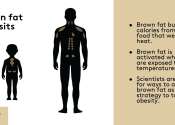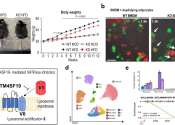Researchers from Denmark and Germany find brown fat's 'off-switch'
Brown fat, also known as brown adipose tissue (BAT), is a type of fat in our bodies that's different from the white fat around our belly and thighs that we are more familiar with. Brown fat has a special job—it helps to ...
Apr 29, 2024
0
69

